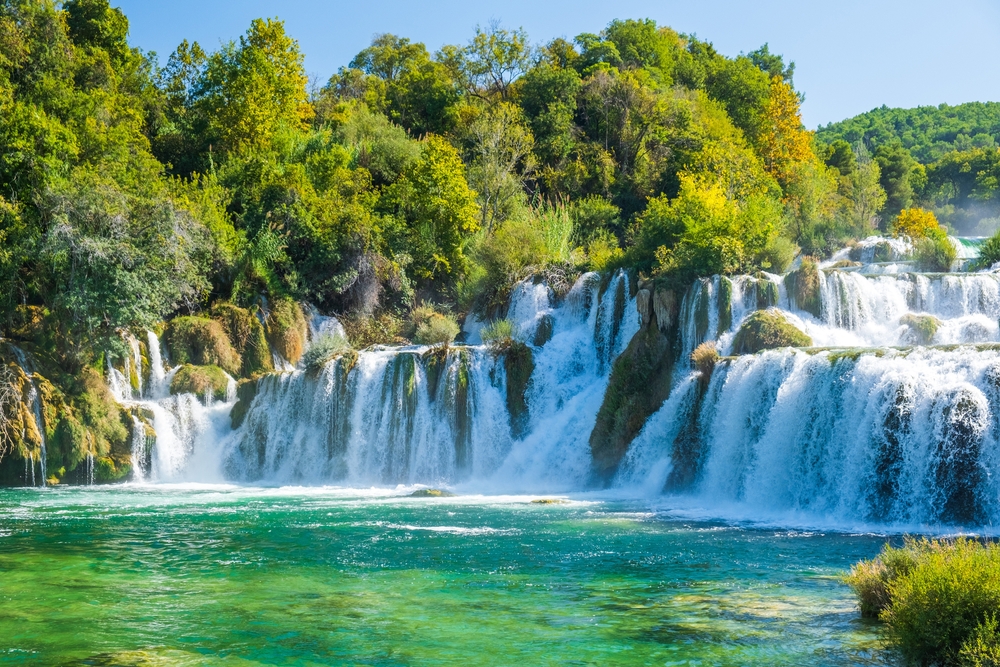Mljet Overview
Mljet National Park, locally known as “Nacionalni park Mljet,” is one of Croatia’s most stunning natural treasures, located on the island of Mljet in the Adriatic Sea. The park encompasses an area of approximately 21 square miles (54 square kilometers) and lies on the western tip of the island, about 23 miles (37 kilometers) off the coast of Dubrovnik.
Established in 1960, it is celebrated for its unspoiled beauty, dense Mediterranean forests, and serene marine landscapes, making it a haven for nature enthusiasts and adventurers alike.
The terrain of Mljet National Park is a mesmerizing mix of lush woodlands, picturesque bays, and striking coastal cliffs. The park’s defining feature is its two interconnected saltwater lakes, Veliko Jezero (Great Lake) and Malo Jezero (Small Lake), which are bordered by thick pine and holm oak forests. The lakes are unique ecosystems, connected to the sea by narrow channels, and offer crystal-clear turquoise waters that shimmer under the Mediterranean sun.
At the center of Veliko Jezero lies the tiny islet of St. Mary, home to a historic 12th-century Benedictine monastery, which adds a touch of cultural significance to the natural surroundings. The park also includes Polače Bay, a charming anchorage framed by ancient ruins, and numerous trails that lead through dense groves of Aleppo pine, strawberry trees, and fragrant maquis shrublands.
The wildlife in Mljet National Park is equally captivating, with a rich diversity of flora and fauna. The saltwater lakes are teeming with marine life, including eels, crabs, and a variety of small fish. Birdwatchers can delight in spotting species such as the European bee-eater, peregrine falcon, and common buzzard, while mammals like the stone marten and wild boar roam the island’s interior.
A notable conservation success is the reintroduction of the Mediterranean monk seal, one of the world’s most endangered marine mammals, which occasionally appears in the park’s waters. Additionally, the park’s forests provide a haven for numerous reptiles, butterflies, and endemic plant species.
Popular features of Mljet National Park include the serene Veliko and Malo Jezero, which are perfect for kayaking, swimming, and paddleboarding. Visitors also flock to St. Mary’s islet to explore the Benedictine monastery and enjoy panoramic views of the surrounding lake.
The park’s hiking and cycling trails provide an immersive way to experience the stunning landscapes, leading adventurers through pine-scented forests, rocky outcrops, and hidden coves. Snorkeling and diving along the coastal areas reveal vibrant underwater ecosystems, while Polače Bay offers a chance to explore Roman-era ruins and relax in tranquil surroundings.
Mljet National Park faces conservation challenges, such as the impacts of climate change and invasive species like the black rat, which threaten native biodiversity. However, the park has implemented successful management programs, including the regulation of visitor numbers, the monitoring of marine ecosystems, and efforts to restore habitats for species like the Mediterranean monk seal. These initiatives have helped preserve the park’s ecological integrity while promoting sustainable tourism.













































































